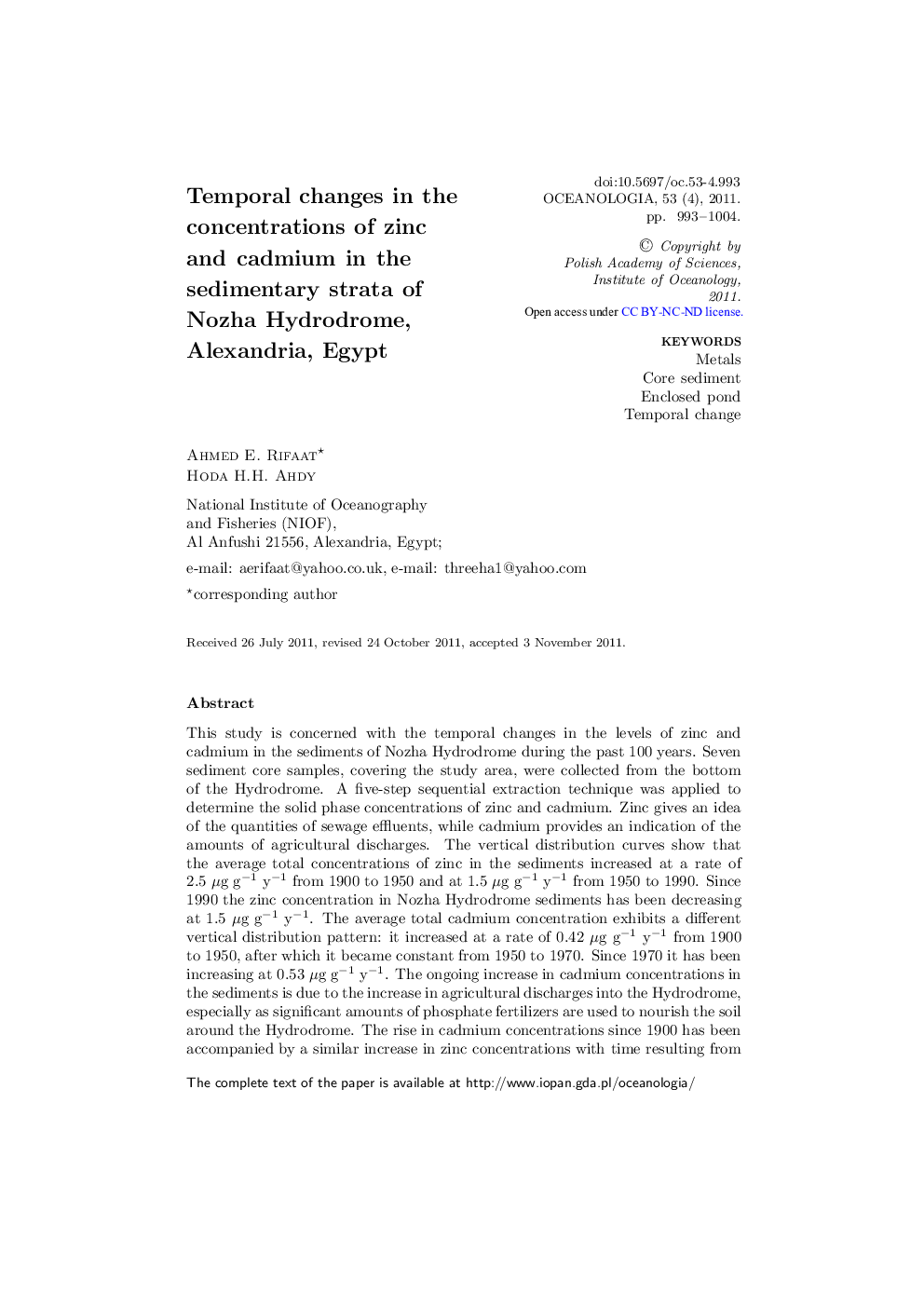| Article ID | Journal | Published Year | Pages | File Type |
|---|---|---|---|---|
| 2069819 | Oceanologia | 2011 | 12 Pages |
This study is concerned with the temporal changes in the levels of zinc and cadmium in the sediments of Nozha Hydrodrome during the past 100 years. Seven sediment core samples, covering the study area, were collected from the bottom of the Hydrodrome. A five-step sequential extraction technique was applied to determine the solid phase concentrations of zinc and cadmium. Zinc gives an idea of the quantities of sewage effluents, while cadmium provides an indication of the amounts of agricultural discharges. The vertical distribution curves show that the average total concentrations of zinc in the sediments increased at a rate of 2.5 μg g−1 y−1 from 1900 to 1950 and at 1.5 μg g−1 y−1 from 1950 to 1990. Since 1990 the zinc concentration in Nozha Hydrodrome sediments has been decreasing at 1.5 μg g−1 y−1. The average total cadmium concentration exhibits a different vertical distribution pattern: it increased at a rate of 0.42 μg g−1 y−1 from 1900 to 1950, after which it became constant from 1950 to 1970. Since 1970 it has been increasing at 0.53 μg g−1 y−1. The ongoing increase in cadmium concentrations in the sediments is due to the increase in agricultural discharges into the Hydrodrome, especially as significant amounts of phosphate fertilizers are used to nourish the soil around the Hydrodrome. The rise in cadmium concentrations since 1900 has been accompanied by a similar increase in zinc concentrations with time resulting from the discharge of untreated sewage into the Hydrodrome. In 1990 a sewerage system and sewage treatment plant came into operation, as a result of which discharges of domestic effluent into the Hydrodrome ceased. Since then the amount of zinc in sediments has been decreasing steadily.
